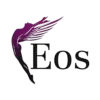Table of Contents
ToggleThailand is taking a significant step forward in strengthening employee protections with the official rollout of the Employee Welfare Fund (EWF), set to begin on October 1, 2025. Though this scheme has been part of the country’s labour law since 1998, only recent regulatory action has activated it, making 2025 a landmark year for Thai employment policy.
This article unpacks what the EWF is, when it comes into effect, and what employers must do to prepare, from legal obligations to operational impacts.
Read our Thailand country guide
What Is the Employee Welfare Fund?
The Employee Welfare Fund is a mandatory social safety net that provides financial assistance to employees in the private sector when:
- Their employment ends (voluntarily or involuntarily)
- They pass away, with compensation going to their beneficiaries
- Other hardship events occur, depending on future regulatory expansion
The fund is funded jointly by employer and employee contributions and is intended to supplement (not replace) severance pay or social security benefits.
What’s New in 2025?
While the EWF has existed in Thai law under the Labour Protection Act B.E. 2541 (1998), its enforcement was delayed for years. That changed in late 2024, when the government issued a Royal Decree and accompanying ministerial regulations, setting the fund’s operational launch for October 1, 2025.
The 2025 rollout includes:
- Mandatory contributions from employers and employees
- A phased contribution structure from 2025 to 2030
- Defined coverage based on company size and benefit offerings
- Exemption pathways for companies with qualifying provident funds or comparable assistance plans
Read more: Thailand Payroll Guide

Contribution Timeline and Rates
| Period | Employer Contribution | Employee Contribution |
| Oct 2025 – Sep 2030 | 0.25% of wages | 0.25% of wages |
| From Oct 2030 onward | 0.5% of wages | 0.5% of wages |
Contributions must be withheld and submitted by the 15th of the following month.
Who Is Covered?
The EWF applies to employers with 10 or more employees, regardless of industry, unless specifically exempt. Companies below this size threshold are not required to register but may still choose to participate voluntarily.
Who Is Exempt?
Employers can qualify for exemption if they provide either:
- A registered provident fund under SEC regulations, where both employer and employee contribute at least 2–15% of wages, or
- Comparable financial assistance, which must:
- Be jointly funded by employer and employee (minimum 2% each)
- Be deposited into traceable, individual employee accounts
- Be accessible in the event of resignation, termination, or death
Note: If a benefit scheme excludes some employees (e.g., probationers), those individuals must still be enrolled in the EWF.
What the Fund Provides
The EWF provides lump-sum financial compensation in cases of:
- Job loss or termination
- Death, with payment to designated beneficiaries
- Retirement, depending on eligibility criteria
- Additional situations, as determined by future regulations
The amount received will depend on length of service and total contributions made over time.
What Employers Need to Do
As the Employee Welfare Fund (EWF) becomes mandatory from 1 October 2025, employers must take a number of concrete steps to ensure compliance. Below is a summary of the key actions required:
1. Confirm Exemption Status (If Applicable)
Employers with 10 or more employees must register for the EWF, unless they qualify for an exemption. Companies may apply for exemption if they offer either a registered provident fund or a comparable welfare scheme as outlined above.
Documentation supporting exemption must be submitted to the DLPW for review and approval.
2. Register with the Department of Labour Protection and Welfare (DLPW)
Registration will be managed through the Ministry of Labour, and further guidance on submission channels (likely digital) will be published in accompanying regulations. Early registration is recommended to avoid penalties.
3. Calculate and Withhold Monthly Contributions
Beginning October 2025, the required monthly contributions are:
- Employer: 0.25% of each employee’s wages
- Employee: 0.25% of their wages (withheld through payroll)
These rates will increase to 0.5% each from October 2030 onward.
4. Submit Contributions on Time
Contributions must be remitted to the designated government authority by the 15th of the following month (e.g., October payroll must be submitted by 15 November). Payment methods and platforms will be specified by the Ministry of Labour—likely through the Social Security Office (SSO) or a dedicated EWF system.
Employers should ensure payroll systems are updated to automate calculations and withholdings, and that processes are in place for timely remittance.
5. Maintain Accurate Records
Employers will be expected to maintain detailed records of:
- Monthly wage data,
- Contribution amounts,
- Proof of payment, and
- Employee benefit eligibility status.
These records may be subject to audit, and accurate reporting will be critical to maintaining compliance.

Penalties for Non-Compliance
The law outlines a range of penalties for employers who fail to comply:
- Late payments: 5% per month interest
- Failure to register or submit documents: Fines, legal action, or imprisonment (up to 6 months and/or THB 10,000)
Proactive compliance will minimise legal and financial risk.
Final Thoughts
Thailand’s Employee Welfare Fund represents a major policy shift aimed at providing better income protection and post-employment security for workers. While it does create new administrative and financial responsibilities, it also offers a way for companies to modernise their employee benefits approach and align with international labour standards.
The key for employers is early preparation. By auditing your current programs, updating systems, and communicating with your team, you can ensure compliance and turn a legal obligation into a trust-building opportunity.
Plan Ahead with Confidence
As Thailand prepares to roll out the Employee Welfare Fund in October 2025, employers must ensure their HR and payroll systems are ready for the changes ahead. At Eos Global Expansion, we help companies navigate complex compliance landscapes across Asia with ease and confidence. Whether you’re already operating in Thailand or planning to enter the market, our local expertise ensures you’re always a step ahead—meeting regulatory requirements while protecting your team and your business.
Get in touch with Eos today to learn how we can support your expansion into Thailand and beyond, with end-to-end HR, payroll, and compliance solutions built for long-term success. Contact Eos Global Expansion today to optimise your payroll operations in Indonesia. Check our services here or book a free consultation now.
Photo by Wanaporn Yangsiri on Unsplash







